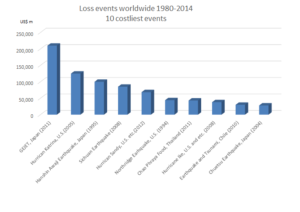Basically, we proceed with a top-down process for the research. The followings are the outlines of the procedures for the surveys: 1) Rojana Industrial Park and Japanese companies and their responsible persons 2) Communities: Community leaders, employees, and critical facilities and their responsible persons.
1) Rojana Industrial Park and Japanese companies and their responsible persons
The followings are the reasons why Japanese companies and why Rojana Industrial Park in the central region of Thailand are selected for the project. The first, 451 of 804 inundated companies in the central region of Thailand caused by the 2011 flood were Japanese related (Tokyo Marine & Nichido Fire Insurance Co., Ltd., 2011). The second, the Rojana Industrial Park, is one of the seven inundated industrial parks in the central region of Thailand. Rojana Industrial Park is also deeply related to the Japanese company because Rojana Industrial Park was established as a joint venture between Japanese (Nippon Steel & Sumikin Bussan Corporation) and Thai (Vinichbutr’s Group) companies in 1983. The Japanese target companies are mainly selected through the connections with the Japanese Chamber of Commerce Bangkok and Japan External Trade Organization (JETRO). The responsible persons are chosen totally up to the companies. The representative Japanese and Thai managers and persons in charge of BCP or risk management of the companies are chosen to meet our needs. We conduct focus group interviews and questionnaire surveys for the above persons and employees in the companies. Questionnaires are distributed and collected in the box in the canteen of the companies.
2) Communities: Community leaders, employees, and critical facilities and their responsible persons
A top-down approach in data collection is applied by gaining the necessary authorization from the senior-level officials such as Chief of DDPM Ayutthaya and Chief district office, which subsequently facilitated reaching out to Tambon and Mooban leaders through the District office. This approach proved useful in establishing the proper and assured contacts to conduct the surveys in the target area.
Firstly, we ask permission to do surveys from the Ayutthaya governor and the chief of the DDPM Ayutthaya office. Second, we are introduced to meet the target Amphoe Uthai chief and ask him to communicate with the four target Tambon leaders. Third, we asl Tambon leaders to introduce the thirty-five Muban leaders and also the persons in critical facilities in the area. After the process, we conduct the employees’ surveys. The target persons, 400, are randomly selected with the recognition of the Muban leaders based on the Yamane formula. We also proceed with the interview surveys to our prioritized twenty-five critical facilities acknowledged by the Tambon and Muban leaders. The representatives or the persons in charge of risk management in the critical facilities are required to answer the questions.



